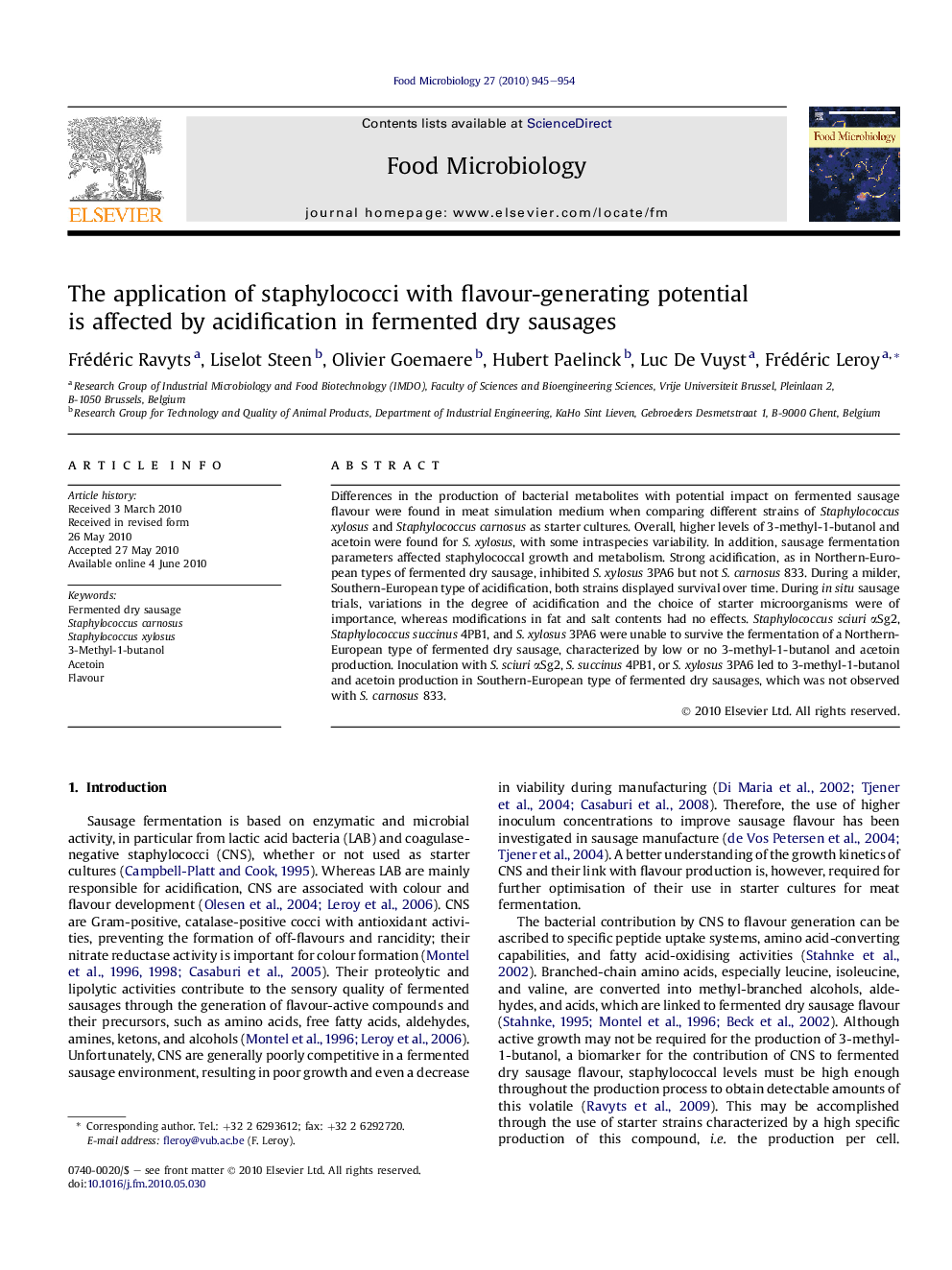| Article ID | Journal | Published Year | Pages | File Type |
|---|---|---|---|---|
| 4363373 | Food Microbiology | 2010 | 10 Pages |
Differences in the production of bacterial metabolites with potential impact on fermented sausage flavour were found in meat simulation medium when comparing different strains of Staphylococcus xylosus and Staphylococcus carnosus as starter cultures. Overall, higher levels of 3-methyl-1-butanol and acetoin were found for S. xylosus, with some intraspecies variability. In addition, sausage fermentation parameters affected staphylococcal growth and metabolism. Strong acidification, as in Northern-European types of fermented dry sausage, inhibited S. xylosus 3PA6 but not S. carnosus 833. During a milder, Southern-European type of acidification, both strains displayed survival over time. During in situ sausage trials, variations in the degree of acidification and the choice of starter microorganisms were of importance, whereas modifications in fat and salt contents had no effects. Staphylococcus sciuri αSg2, Staphylococcus succinus 4PB1, and S. xylosus 3PA6 were unable to survive the fermentation of a Northern-European type of fermented dry sausage, characterized by low or no 3-methyl-1-butanol and acetoin production. Inoculation with S. sciuri αSg2, S. succinus 4PB1, or S. xylosus 3PA6 led to 3-methyl-1-butanol and acetoin production in Southern-European type of fermented dry sausages, which was not observed with S. carnosus 833.
